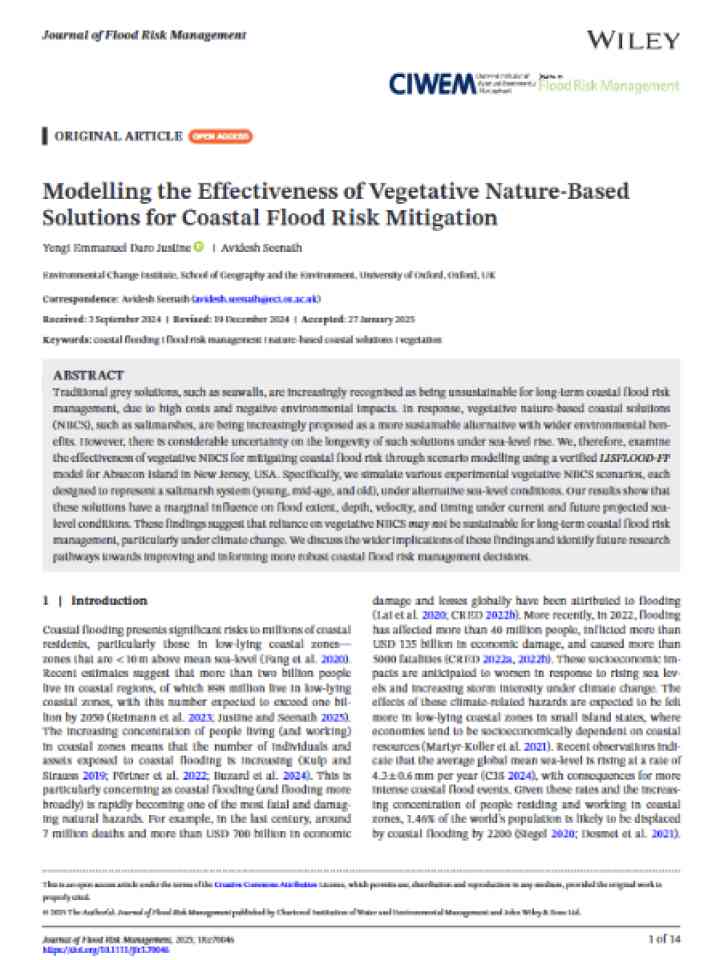Modelling the effectiveness of vegetative nature-based solutions for coastal flood risk mitigation
Vegetative nature-based coastal solutions (NBCS), such as saltmarshes, are being increasingly proposed as a more sustainable and environmentally-beneficial alternative to traditional grey flood risk management measures. However, there is considerable uncertainty on the longevity of such solutions under sea-level rise. The study examines the effectiveness of vegetative NBCS for mitigating coastal flood risk through scenario modelling using a verified model for Absecon Island in New Jersey, USA. Specifically, the research simulates various experimental vegetative NBCS scenarios, each designed to represent a saltmarsh system (young, mid-age, and old), under alternative sea-level conditions.
The results show that these solutions have a marginal influence on flood extent, depth, velocity, and timing under current and future projected sea-level conditions. These findings suggest that reliance on vegetative NBCS may not be sustainable for long-term coastal flood risk management, particularly under climate change. We discuss the wider implications of these findings and identify future research pathways towards improving and informing more robust coastal flood risk management decisions.
Explore further
